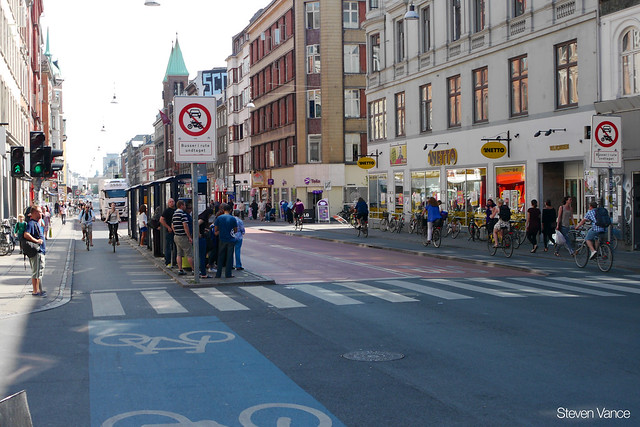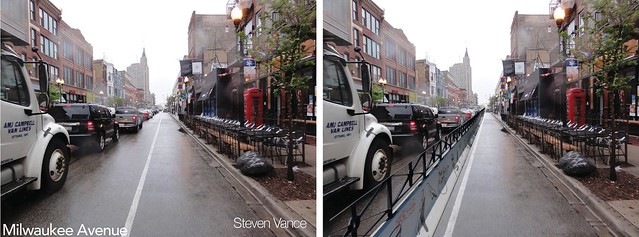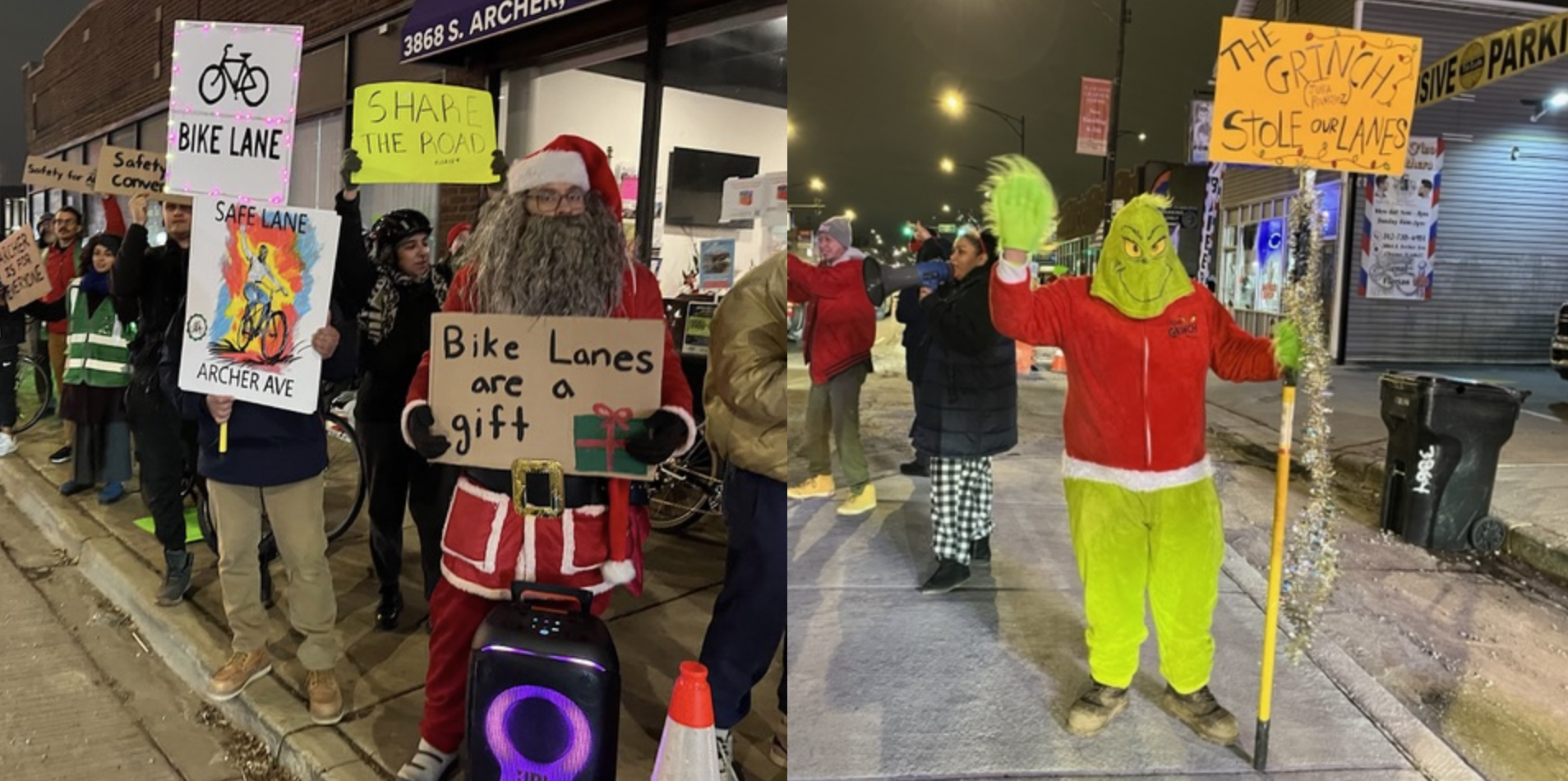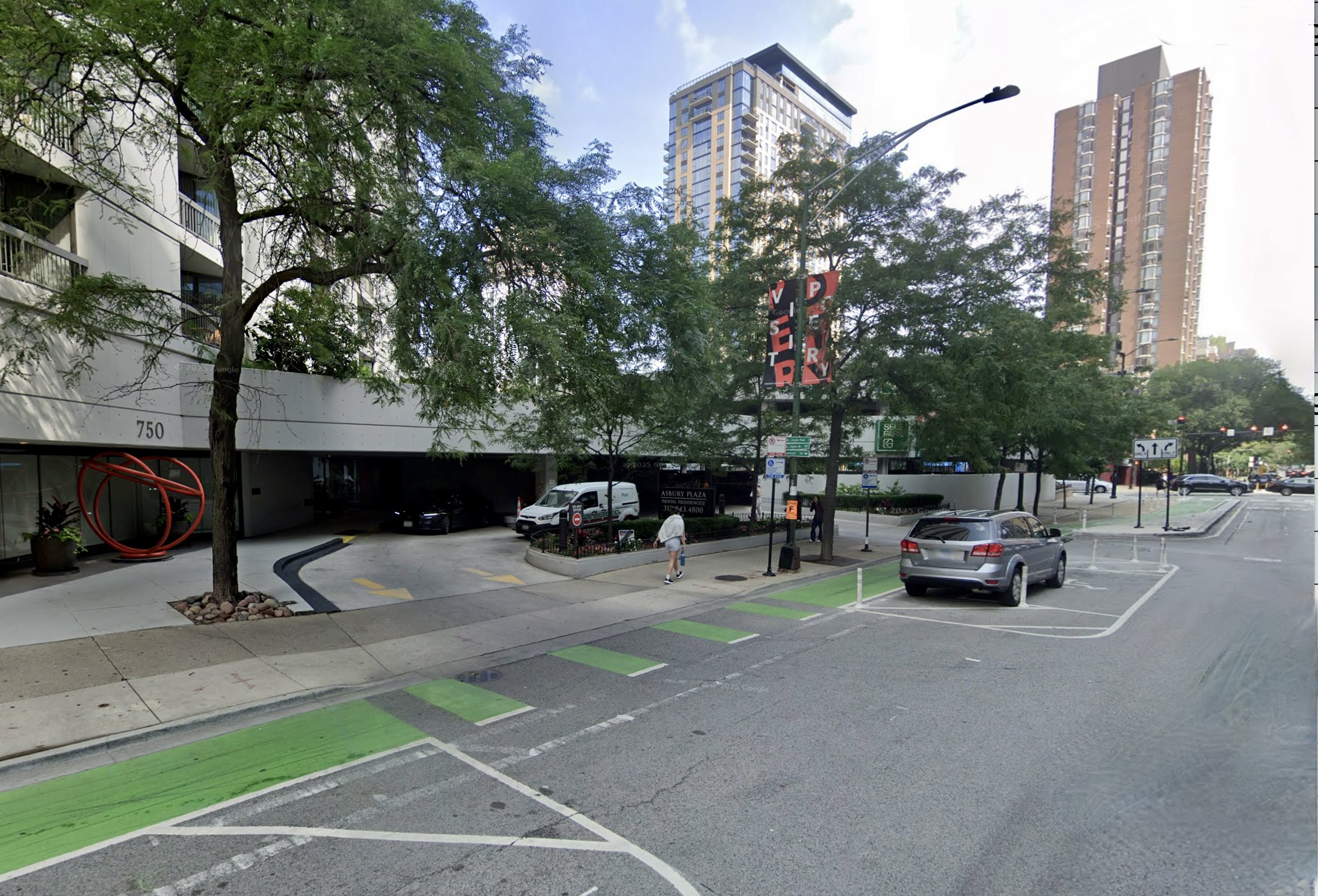When the Chicago Department of Transportation proposed a redesign of Milwaukee Avenue that will improve safety for cycling, a few merchants groused about the loss of parking directly in front of their stores. Change can be scary, but this fear is misplaced. A safer street is a more inviting street, and CDOT could actually implement much more dramatic transformations that would still benefit the bottom line of local businesses.
Take the stretch of Milwaukee in Wicker Park. This is one of the most vibrant neighborhoods in Chicago, but it has a congestion problem. And all that car traffic on neighborhood streets decreases the quality of life for people who live there, people who visit, and people who travel through.
If you approach this problem the conventional way, you might eliminate parking to make room for more travel lanes. But that would also make the street less pleasant for walking, and then it wouldn't be such a vibrant place. The congestion might be alleviated, but you would also eliminate some of the reasons people came in the first place.
There's another way to approach the problem: Giving priority to the most efficient modes of transportation, which would address both the need for people to travel and the need to create a desirable urban environment. More people will be able get to and through the place, even as the pedestrian environment improves thanks to the decline in car traffic.
This more rational option is paying dividends for American cities. Reallocating urban street space from cars to pedestrians, bikes, and transit has shown time and time again to improve the efficiency of the street and enhance retail performance. A recent analysis of sales receipts and real estate data in New York City found that streets where traffic lanes and parking had been re-purposed for bus lanes, bike lanes, and pedestrian space performed better economically, overall, than streets that saw no changes. San Francisco recently eliminated left turns and increased enforcement on its transit-only lanes on Church Street: travel times dropped, reliability increased. These changes are good for business in part because they make the street more accessible to pedestrians and cyclists, who tend to make more frequent trips to retailers than car drivers.
So what could be done on Milwaukee Avenue in Wicker Park? Well, one solution would be to make it a street only for transit, biking, and walking. Taxis could also be allowed to take home those who can't take themselves home.
The resulting roadway would look something like this section of Copenhagen's Nørrebrogade, the main drag of the Nørrebro district (think of it as the Wicker Park of the Danish capital):
In 2008, one block of Nørrebrogade was closed to cars for a three-month trial. Afterward, the changes were made permanent. Improvements for transit and bicycling were implemented not just on the car-free block, but on the entire length of the street, including closer to the city center where double-wide bike lanes were constructed. Here's how one local official described the city's thinking:
"Our goal of transforming Nørrebrogade into a better place to be, making it easier to be a cyclist, pedestrian and bus passenger, has succeeded", said Klaus Bondam, the councillor in charge of Traffic and Environment.
The followup report showed that car traffic on Nørrebrogade decreased 60 percent while traffic in the surrounding neighborhood also decreased, but by a smaller amount -- 10 percent. At the same time, buses traveled 10 percent faster, and the number of pedestrians and cyclists on the street increased. As you can see, it remains a thriving retail environment.
A car-free Milwaukee Avenue could also feature wider sidewalks, providing more space for sidewalk cafés (the cheapest way for restaurants to sell more tables), and a bigger buffer for the existing cafés that occupy more than half the sidewalk. Meanwhile, dooring between bicyclists and drivers – very high in this corridor – would be eliminated.
Too bold for Chicago, you say? It would be a major change, sure, but it would work.
The status quo on Milwaukee clearly isn't working. You cannot improve transportation to and through an area by letting private cars -- the least efficient mode -- have most of the space. While Milwaukee often has long traffic backups and the conditions remain hostile for the average Chicagoan who might bike there, it's only getting worse as a transportation corridor. Bus ridership on the 56/Milwaukee has dropped by over 100,000 riders per month since 2001. Even automobile counts have dropped.
Where would the drivers go if this part of Milwaukee became a transit-and-bikes-only street? Some car trips would surely be converted into transit or biking trips. Others would find different routes. The Chicago Transit Authority is looking at this question as it relates to the bus rapid transit line proposed for Ashland Avenue, which would eliminate left turns at several intersections. Initial findings show that "the Chicago grid network is robust and provides multiple routes to the same destination." In other words, we have a lot of redundancy in our transportation network. We should take advantage of that by creating great streets for people, not cars.







